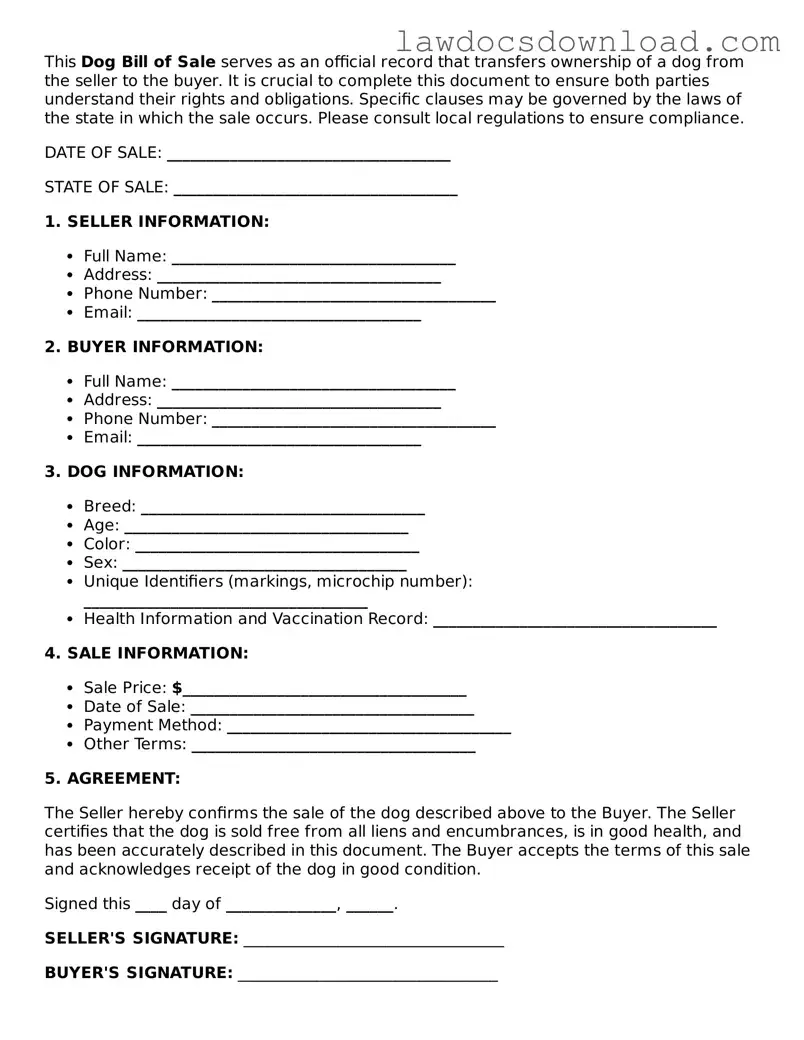A Cat Bill of Sale shares much in common with the Dog Bill of Sale. Both serve as a tangible record of the transaction between the seller and buyer, typically detailing the animal's breed, age, health condition, and the sale price. They ensure the legal transfer of ownership and help to resolve any disputes that might arise later on. This document similarly outlines the responsibilities of the buyer to provide proper care for the pet, ensuring a smooth transition for the animal to its new home.
The Horse Bill of Sale, while tailored to equine transactions, echoes the structure and purpose of the Dog Bill of Sale. It documents the sale of a horse, specifying details such as the animal’s pedigree, health records, and any other special conditions of the sale. Both forms act as a protective measure, giving peace of mind to both parties by clearly stating the terms of the agreement, including warranties or representations about the animal's condition or training.
An Automobile Bill of Sale is akin to the Dog Bill of Sale in that it records the sale of personal property, in this case, a vehicle, from one party to another. It includes critical information such as make, model, year, VIN number, and the agreed-upon sale price, similar to how a Dog Bill of Sale lists the pet's details and sale price. Both ensure the buyer receives legal ownership and serve as evidence of the transaction, useful for registration or insurance purposes.
The Equipment Bill of Sale closely relates to the Dog Bill of Sale, with its focus on the transfer of ownership of items (in this instance, equipment) from the seller to the buyer. This document often includes descriptions of the items being sold, the condition they are in, and any terms of the sale, mirroring how a Dog Bill of Sale outlines the pet’s details and the conditions under which the sale occurs. It's a critical document for both parties to prove transfer of ownership and to clarify the specifics of the warranty.
A Boat Bill of Sale functions similarly to the Dog Bill of Sale, facilitating the transfer of ownership of a boat. It contains specific details about the boat, such as its type, size, make, model, and serial number, mirroring the detailed description found in a Dog Bill of Sale. This document also typically includes the sale price and the terms of the sale, providing a record that can be useful for registration and taxation purposes, ensuring legal ownership transfer.
The Firearm Bill of Sale, although for a very different type of property, parallels the Dog Bill of Sale in its principal role as a transaction record. This document details the make, model, caliber, and serial number of the firearm, alongside the buyer’s and seller’s information, similar to how a Dog Bill of Sale lists the pet's specifics and the parties involved. Both types of bills of sale are crucial for establishing legal ownership, with the added importance of a Firearm Bill of Sale in tracking the lawful transfer and possession of guns.
